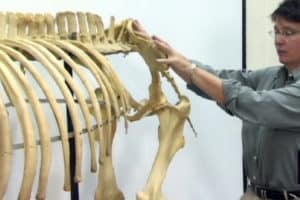Latest News – The Horse
Nevada Pair Sentenced in Mustang Shooting Case
Two Nevada men will each serve six months in federal prison and one year of probation in connection with the November 2009 shooting deaths of five Bureau of Land Management (BLM) mustangs. The shootings occurred at the Buckhorn Horse Management Area of Northern Washoe County, Nev.
HRH Princess Haya Elected to Second Term as FEI President
HRH Princess Haya Al Hussein (JOR) was re-elected Nov. 5 in a landslide victory as Federation Equestre Internationale president at the Federation’s General Assembly in Taipei. Princess Haya, who was seeking a second and final four-year term as president, won in the first round of voting with 90 votes of a total 124 valid ballots.
Tack and Habit Episode 25 – Please Drink and Drive, Water That Is
We help the fat and thirsty horses on today’s show with Helena’s pick of the best muzzle and a new product to keep your horse
Horse Tip Daily 329 – Carol Gordon on Employee vs. Independent Contractor
We are thrilled to have Carol joining us to help us with our accounting and tax knowledge as it relates to the horse industry. Today
Connections of Breeders’ Cup Starters Pledge to Give Back
After raising $47,000 in pledges from the 2009 Breeders’ Cup, New Vocations Racehorse Adoption Program is well on its way to doing the same–if not more–this year. Owners and trainers of Breeders’ Cup starters have been asked to pledge a percentage of their earnings to support New Vocations’ mission to rehabilitate, retrain, and re-home retired racehorses.
Penn State Speaker Series to Feature Rutgers Equine Extension Specialist
Pennsylvania State University’s student-sponsored Equine Speaker Series will return later this month to continue providing horse owners and enthusiasts with access to industry professionals and the information they have to offer. November’s speaker will be Carey A. Williams, PhD, Rutgers University equine extension specialist. Williams will deliver her presentation Nov. 30 from 6:30 to 8:30 p.m.
Platelets Might Play Early Role in Laminitis
Laminitis begins well before clinical signs occur, at the cellular or even the molecular level, and addressing platelets might be a key to prevention or early treatment. Jamie Textor, DVM, Dipl. ACVS, an equine surgeon and PhD candidate at the University of California, Davis, spoke about the role of platelets in laminitis during the Sept. 17-18 Laminitis West Conference, in Monterey, Calif.
BLM, Wild Horse Advocates to Discuss Walker Lake Mustang Management Plan
The Bureau of Land Management (BLM), the U.S. Army and wild horse advocates will meet in Nevada to discuss ways to manage 104 mustangs residing south of Walker Lake on the Hawthorne Army Depot.
Maryland Horse Industry Board Awards Grants to Equestrian Groups
Therapeutic programs, equine rescue organizations, youth clubs, educational and research programs are among the 18 organizations receiving $17,693 in grants from the Maryland Horse Industry Board. The grants help to strengthen the industry by building awareness of and involvement in the horse industry through research, education and promotional activities.
Don’t Touch That Tail!
I don’t know about you, but I place a lot of value on my horses’ tails–I used to spend hours just combing my fingers through

The Horse’s Skeleton: Hind Limbs
Learn about the structure and function of your horse’s powerful hind limbs with Dr. Roberta Dwyer of the University of Kentucky’s Gluck Equine Research Center.
Kentucky Horse Council Matches Funds for Geld Clinics
The Kentucky Horse Council (KHC) has launched a matching funds program to promote free or low-cost geld clinics in the Commonwealth. The organization started the program to assist Kentucky veterinarians who conduct Operation Gelding clinics as part of an Unwanted Horse Coalition (UHC) program that is currently under way.
USDA Releases Equine Piroplasmosis Literature Review
Concerns about equine piroplasmosis (EP), a blood-borne disease considered to be foreign to the United States, have prompted educational efforts to inform veterinarians and horse owners about the disease. To further these educational efforts, the USDA’s Animal and Plant Health Inspection Service (APHIS) is releasing A Literature Review of Equine Piroplasmosis.
UC Davis Equine Preventive Care Program Provides Exams, Vaccines, and More
The veterinarians of the University of California, Davis,’ William R. Pritchard Veterinary Medical Teaching Hospital want to help clients protect their horses from influenza, tetanus, dental problems, and other health risks, despite the economy, so they’ve developed a a discounted “package” of preventive care services.
IPhone App Details FEI Prohibited Medications
The Federation Equestre Internationale (FEI) announced Tuesday that it has launched a mobile phone application which gives those involved in horse sport quick and easy access to crucial information on prohibited substances. The Clean Sport app allows immediate access to the FEI equine prohibited substances online database, which was developed early in 2010.
All Zenyatta All The Time at Churchill
With only two workouts by Breeders’ Cup World Championship entrants, the scene on the backside of Churchill Downs the morning of Nov. 3 was all about Zenyatta. There was a huge throng outside Barn 41 as the 6-year-old mare, who is the morning line favorite at 8-5 for the Breeders’ Cup Classic to be held Saturday.











